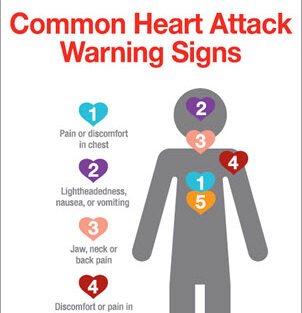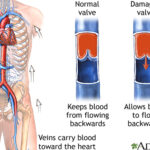Catch the signs early

Don’t wait to get help if you experience any of these heart attack warning signs. Some heart attacks are sudden and intense. But most start slowly, with mild pain or discomfort. Pay attention to your body and call 911 if you experience:
- Chest discomfort. Most heart attacks involve discomfort in the center of the chest that lasts more than a few minutes – or it may go away and then return. It can feel like uncomfortable pressure, squeezing, fullness or pain.
- Discomfort in other areas of the upper body. Symptoms can include pain or discomfort in one or both arms, the back, neck, jaw or stomach.
- Shortness of breath. This can occur with or without chest discomfort.
- Other signs. Other possible signs include breaking out in a cold sweat, nausea or lightheadedness.
Download our heart attack warning signs infographic (PDF)
Symptoms vary between men and women
As with men, women’s most common heart attack symptom is chest pain or discomfort. But women are somewhat more likely than men to experience some of the other common symptoms, particularly shortness of breath, nausea/vomiting, and back or jaw pain.
Learn about the warning signs of heart attack in women.
Watch video: “Just A Little Heart Attack” – a short film directed by and starring Elizabeth Banks
Don’t hesitate to call 911
Learn the signs for heart attack, and remember: Even if you’re not sure it’s a heart attack, have it checked out.
Minutes matter. Fast action can save lives – maybe your own.
Call 911 if you experience heart attack warning signs. Calling 911 is almost always the fastest way to get lifesaving treatment.
An emergency medical services (EMS) team can begin treatment when they arrive – up to an hour sooner than if someone gets to the hospital by car. EMS staff are also trained to revive someone whose heart has stopped. Patients with chest pain who arrive by ambulance usually receive faster treatment at the hospital, too.
For many reasons, it’s best to call 911 so that an experienced EMS team can begin treatment and arrange rapid transport to the emergency room



